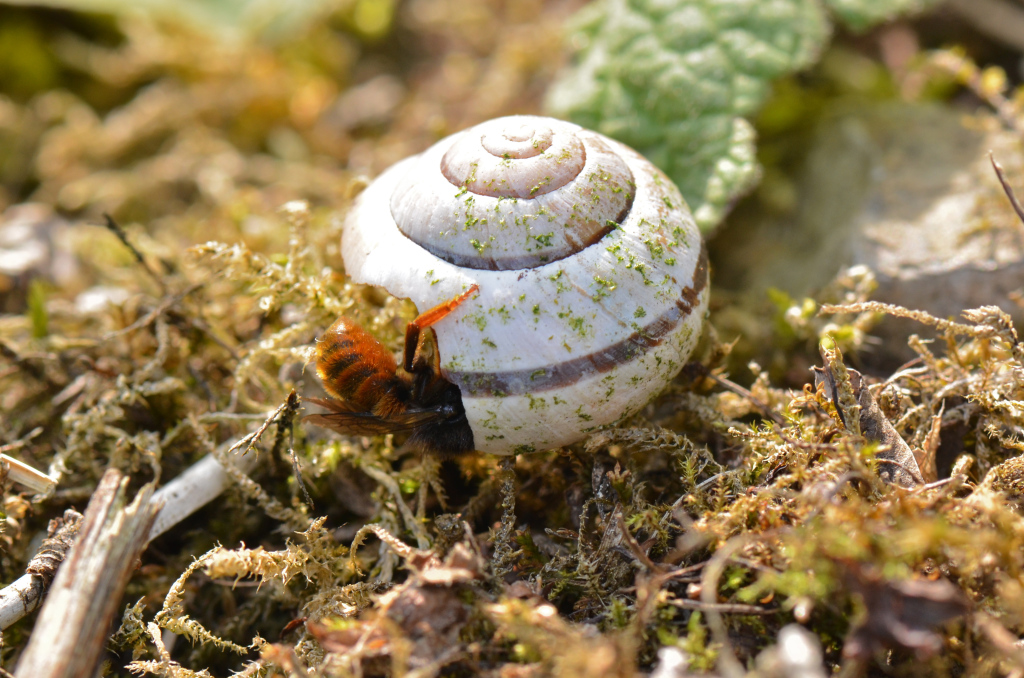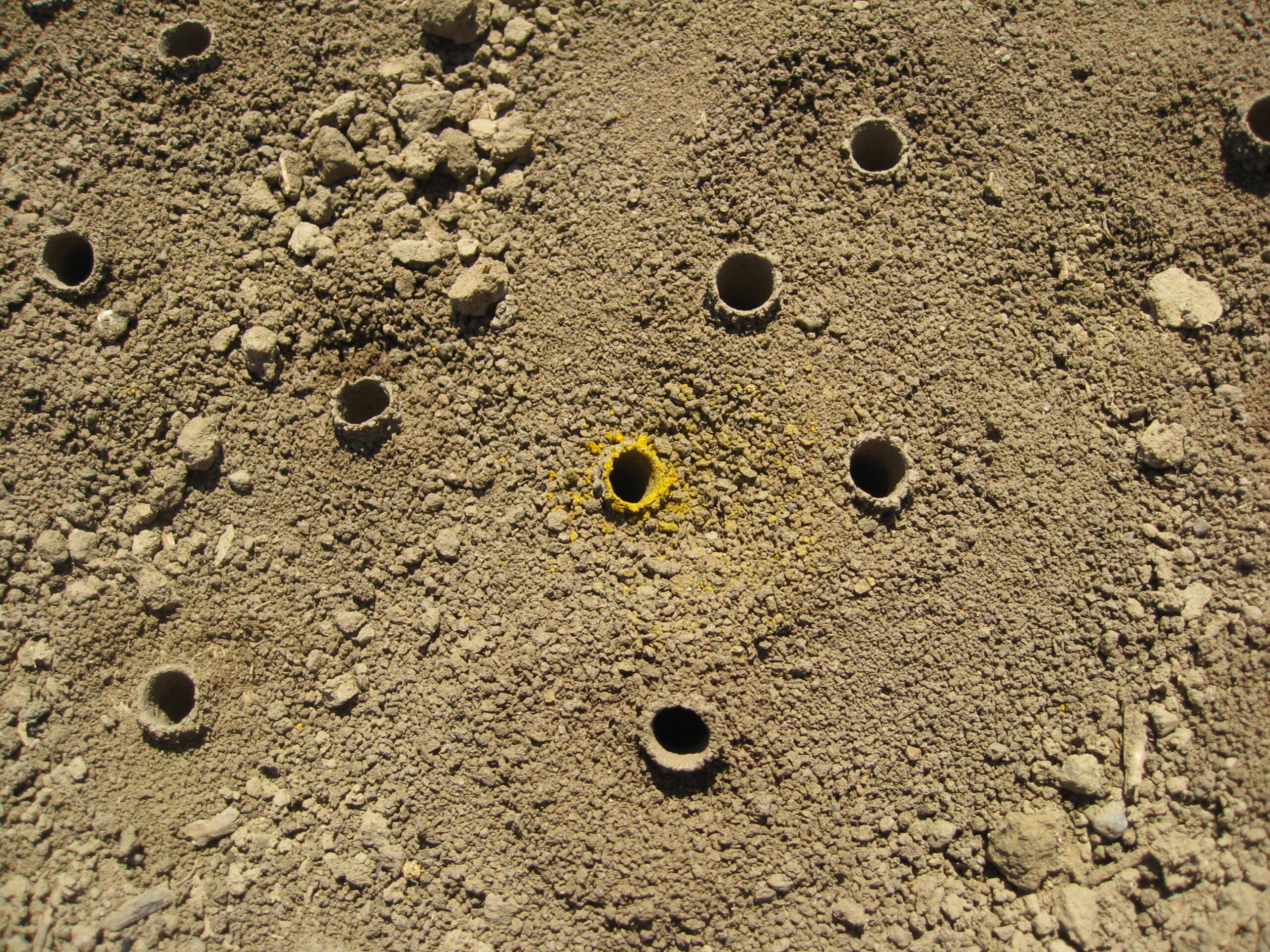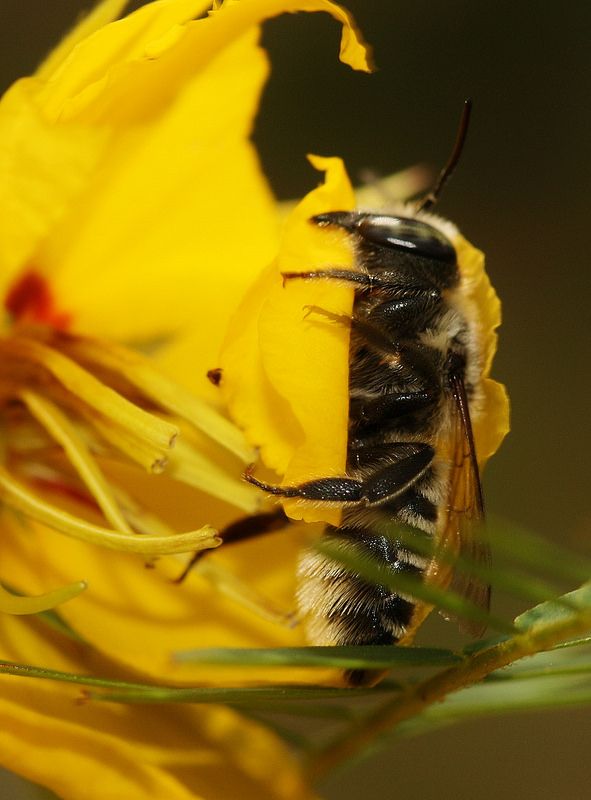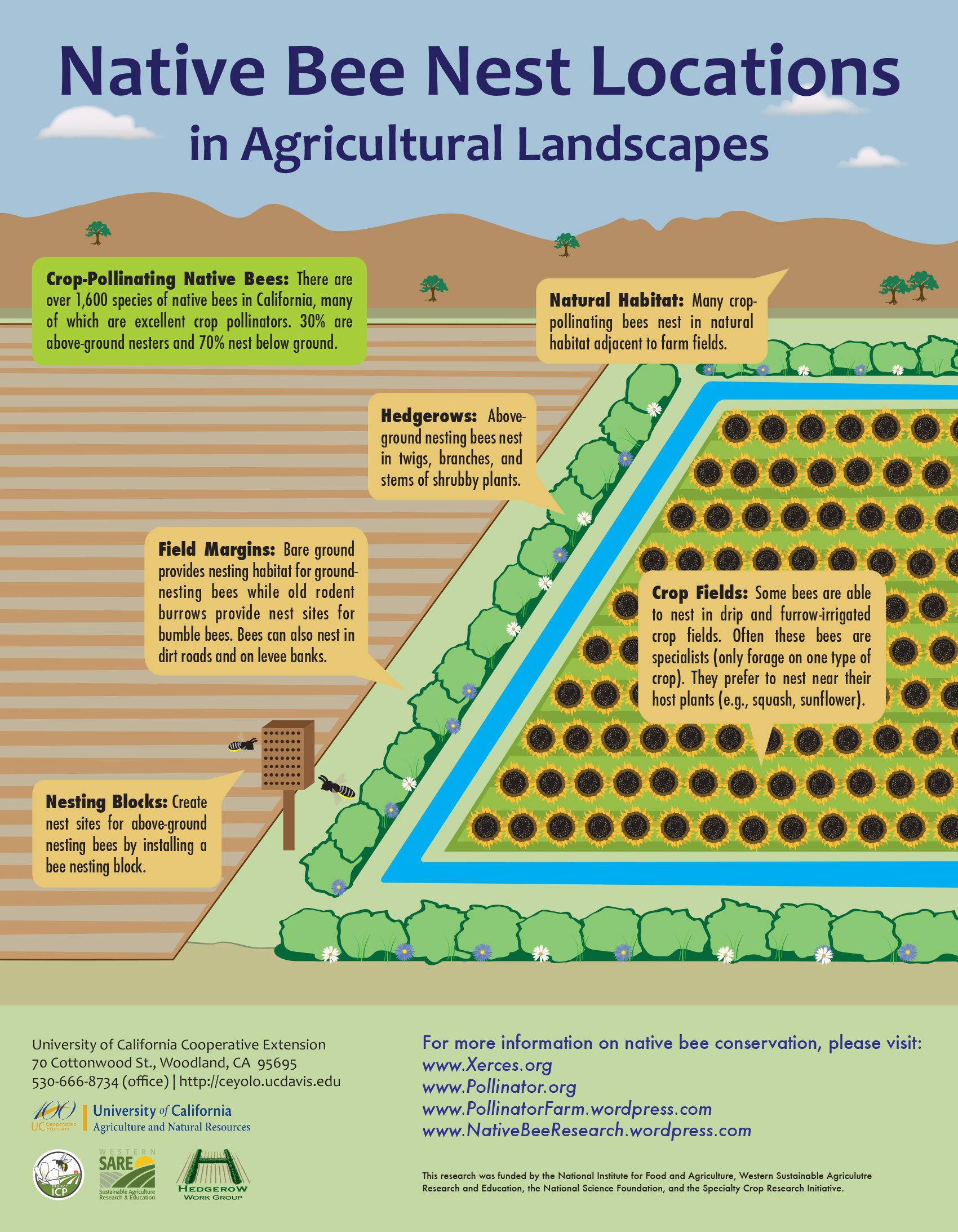Wild bees make their homes in a variety of surprising places, from snail shells to embankments to inside plant stems. They also use an impressive array of building materials, including mud, flower petals and resin. Despite this incredible diversity of nesting preferences, we can group bee nesting habits into three primary groups: below-ground nesters, above-ground nesters, and cavity nesters.

Some bees, like this two-colored mason bee entering a snail shell, can be quite resourceful when it comes to finding a place to build their nests. Photo: urbanbees.eu
Below-ground nesters
As their name suggests, these bees excavate their nests underground. Most bees fall into this group, which is likely the reason why bee diversity is highest in desert and mediterranean regions that have ample sunny, bare ground that isn’t prone to oversaturation.
Below-ground nesters dig out soil to create a network of tunnels that lead to brood chambers- the tiny cells in which young bees develop. Most of these nest cells are created between 6 – 16 inches below the soil surface, though the tunnels of some bees that reuse pre-existing nests have been found to extend for dozens of feet underground.

At some nesting sites, nests are built in aggregations, such as the sunflower chimney-bee (Diadasia enavata) nests seen here. Photo: Hillary Sardinas (Xerces Society)
Unless bees nest in aggregations- many bees of the same species all nesting next to one another- it can be challenging to find the entrance to a ground-nesting bee nest. While they are being actively excavated a bee nest can look a lot like an ant nest, though the grains of dirt that ring them are not typically all the same size as with an ant nest. Ant nests also tend to have parts of dead ants ringing them. Some bees, like the sunflower-specialist Diadasia enavata pile the soil they remove into towers, known as tumuli. These can extend a few inches before toppling over.
Below-ground nesting bees prefer to nest in loamy soils. Soils with too much clay can get waterlogged while sandy soils don’t hold their structure. Below-ground nesters can be found in habitat areas, along dirt roads and irrigation canals– really anywhere there is access to sparsely vegetated open ground.
Above-ground nesters
Bees that don’t nest underground tend to nest either in the hollow stems of plants- known as pithy-stemmed plants- or in pre-existing holes created by other insects in wood. Carpenter bees are one of the few species that can chew up wood pulp. Their large mandibles allow them to construct their nests in dead wood, including in decks and porches.

Leaf cutter bees carefully cut sections out of leaves to partition their nest cells. Photo: Animal Estates
Because they can’t create nest cells out of soil, like below-ground nesting bees, above-ground nesting bees gather materials from their environment to make cells. Mason bees get their name because they gather mud with which to build their nest cells. Leaf-cutter bees cut out sections of leaves to partition their cells. Sometimes they also use flower petals, leading to nests that look like works of art. Wool-carder bees (Anthidium sp.) get their name because they scrape soft hairs off plants and use those to form their nests.
To support above-ground nestering bees, incorporate plant species that they use for nests or as building materials (see Appendices E and F to the Production Standards).

Leaf cutter bees also cut sections of flower petals, which add color to their nests. Photo: Pinterest
Cavity nesters
Cavity nesting bees nest in hollow spaces. Honey bees are the most well-known example of a cavity-nester– you may have had them take up residence in your attic and had to hire someone to move them. Bumble bees are also cavity-nesters, andthey prefer to use abandoned rodent burrows or gaps that form under plants, including trees and native bunch grasses. Bumble bees create mud cups of honey in their cavity nests.
Why are nests important?
Flowers, which are bees’ food source, are just one piece of the conservation equation. Nests are important for native bee reproduction because they provide a safe environment for offspring to live. Each nest cell gets provisioned with pollen that bee larvae eat as they grow and mature. By helping farmers create and protect nest sites, Bee Better is able to help foster the next generation of bees.

How Bee Better Certified supports bee nesting
To support this diverse array of nest preferences, the Bee Better Certified Production Standards require farmers to create opportunities for nesting while protecting any known nest sites.
First, if nest sites are discovered, they should remain undisturbed and farm workers should be alerted to their presence so management activities don’t disrupt nesting activities (Standard 1.4.a).
All newly installed habitat needs to incorporate plant species that are used as nests (pithy-stemmed plants) as well as those that provide nest building materials (Standard 1.4.b).
Finally, to reduce harm to the offspring of below-ground nesting bees, we ask growers to develop management strategies that reduce soil disturbance, including tillage (Standard 1.5) We’ll have an entire blog post devoted to tillage next week, so stay tuned!
Bee Better Certified Production Standards

